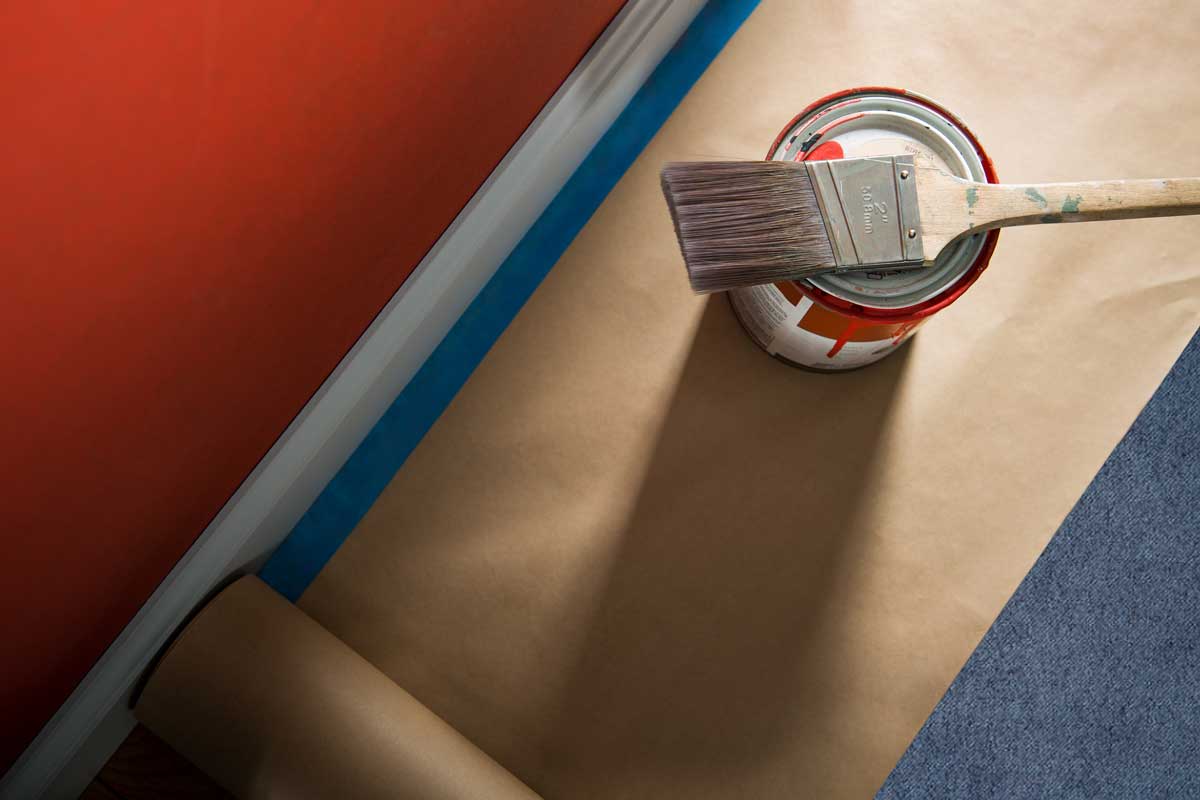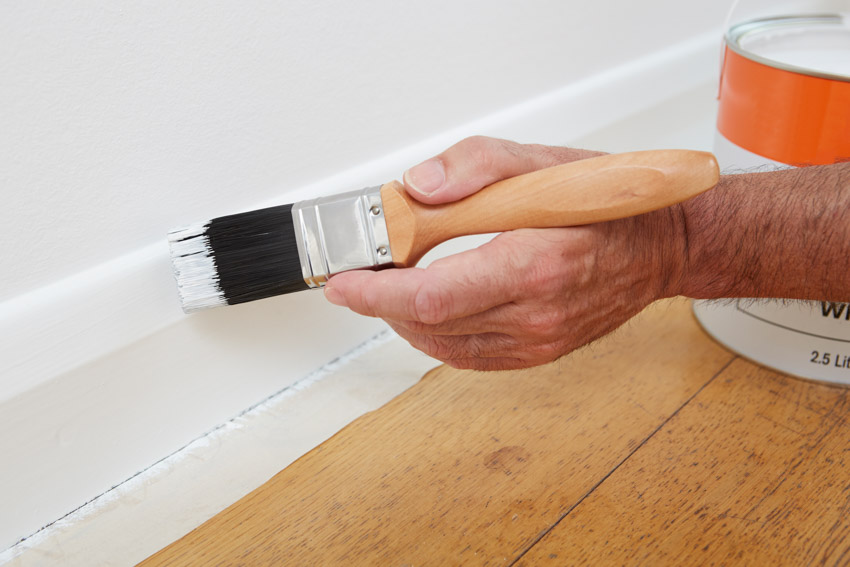Common newbie questions about baseboards: can we skip them?
I’m not an expert ( at least not according to the diy’er I married), but since baseboards are the first to show signs of wear and tear, a fresh coat of paint can go a long way toward making a room feel new again.
Preparing The Room And Gathering Supplies

Purchase Painting Pads To Use On Your Baseboards
Using painting pads rather than brushes or rollers will result in a smoother application of paint on the trim. Furthermore, because pads are often the same width as standard baseboards, you may paint the whole width of the baseboard (from top to bottom) with a single stroke. This reduces the quantity of paint that drips off the trim as you paint.
For Your Baseboards, Get Oil-based Paint
Oil-based paint lasts far longer and dries much harder than other forms of paint. It may be washed with a mild detergent without affecting the gloss of the paint. Oil-based paints also dry slower than latex or water-based paints, allowing you to paint for longer periods of time. Choose any color you want: some homeowners like white baseboards, while others choose wall-matching baseboards.
Ventilate The Room Where You’ll Be Painting The Baseboards
Always work in a well-ventilated area when painting. Open all windows and doors in the room you’re painting in to avoid becoming trapped by paint fumes. If the space lacks outdoor windows or doors, utilize box fans to bring in fresh air.
Remove Dirt And Dust From Your Baseboards
Apply a tiny amount of dish soap to a clean cotton rag or washcloth. Soak the cloth in warm tap water until the soap foams. Then, softly wipe the surface of your baseboards with the cleaning cloth to remove any filth, stains, or dirt.
Use Painter’s Tape To Mask The Baseboards
Tape a strip along the top of the baseboard where it meets the wall. Press the tape firmly into place to prevent it from slipping while you’re painting. Before you begin painting, cover all of the baseboards with masking tape. Masking the baseboards shields the walls from paint, allowing you to avoid putting paint on the walls while painting the baseboards.
Then, place a 4 mm (0.16 in) gauge plastic sheet on the floor.
The Painting Stage

Fill A Paint Tray With 14 Gallon (0.9 L) Of Paint
This amount of paint should cover the tray’s bottom to a depth of approximately 34 inches (1.9 cm). If your paint seems unevenly colored when you first open the container, mix it using a 1 foot (0.30 m) long wooden painter’s stick. This will guarantee that the paint is evenly colored when applied to your trim.
Immerse The Painting Pad In The Paint
Dip the pad deeply enough to cover only the sponge portion of the pad with paint. Scrape the extra paint from the pad by running it down the tray’s edge.
Paint The Baseboard Using The Painting Pad (I Know That’s Obvious But Well…)
Hold the painting pad vertically so that the paint-covered face is flush with the baseboard. Slide the pad smoothly from left to right down the baseboard.
Work carefully, since it is preferable to apply two or more thin coats of paint rather than one messy application. First, paint the top border of the baseboard, then the face. This will prevent you from damaging the face of the baseboard while attempting to paint the thinner edge.
If The First Layer Of Paint Is Translucent, Apply A Second Coat
This is especially important if you’re painting light-colored trim with dark-colored paint. Add a thin coat of paint, let it dry fully, and then apply another thin layer.
After 2 Hours, Remove The Painter’s Tape And Pick Up The Plastic
The 2-hour waiting period will allow the paint to partially dry but not fully. Begin at one end of a lengthy strip of painter’s tape and gradually peel until the entire strip is removed from the baseboards.



Pingback: The Ridiculously Comprehensive Guide to French Doors | MyHome
Pingback: Top 4 Things To Look Into Before Getting Sliding Gate | MyHome
Pingback: What Type Of Millwork Is Best Suited For Modern Construction? | MyHome
Pingback: Top 5 Tips For Choosing The Perfect fences For Your Home | MyHome
Pingback: Why Choose Tempered Glass As A Shower Enclosure? | MyHome
Pingback: Why Is Wood Millwork Still In Fashion? | MyHome
Pingback: Bathroom Under The Roof: How To Bring Light Into It? | MyHome
Pingback: Top 4 Things To About Oven Maintenance | MyHome
Pingback: Dividing A Room In Two: Our 6 Tips | MyHome
Pingback: Top 5 Tips To Renovate Your Kitchen | MyHome
Pingback: Facade Renovation: Legal Obligations And Legislation In France | MyHome
Pingback: Top 7 Tips To Remodel Your Bathroom | MyHome
Pingback: What To Do With The Furniture And Accessories You No Longer Use? | MyHome
Pingback: Renovation Project: Some Points To Consider | MyHome
Pingback: Top 5 Tips For Choosing The Right Staircase For Your Home | MyHome
Pingback: Reduce Heat Loss By Renovating The Interior Of Your Home! | MyHome
Pingback: Top 6 Tips For Choosing Your Kitchen Cabinets | MyHome
Pingback: Our Advice On Tile Installation | MyHome
Pingback: Re-Roofing: What Budget Should I Plan For? | MyHome